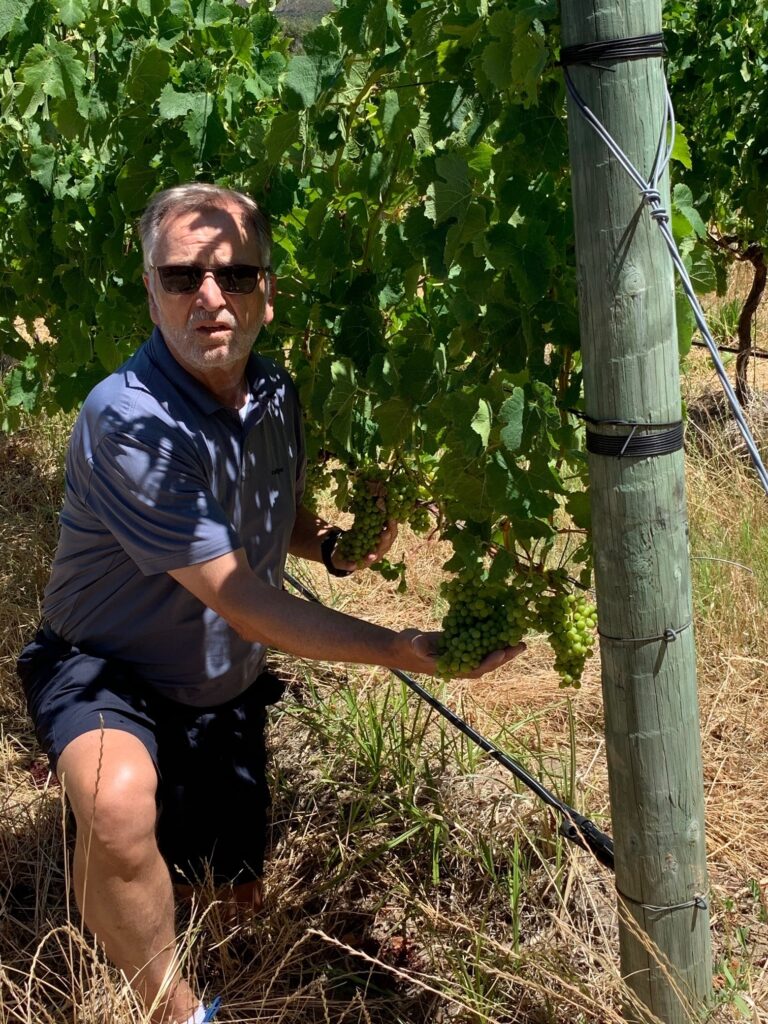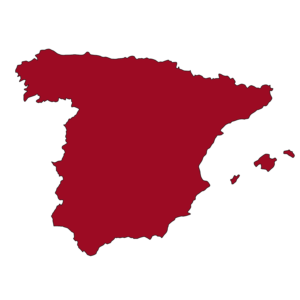
Compared to the history of winegrowing in the Old World, the history of overseas wines is still quite young — but vines have also been cultivated here for around 500 years. Originally, the term “New World” is a historical European term for the American continent discovered by Christopher Columbus in 1492. The so-called “New World” was thus conceptually contrasted with the Old World, which until then had been Europe, Asia and Africa. Today, the concept of the New World is defined more broadly — in addition to North and South America, it also includes Australia, New Zealand and South Africa in the wine-growing sense. This is because, starting in America at the beginning of the 16th century, more and more new areas were opened up for the cultivation of grapes. The colonists were mostly motivated by religion, as they cultivated the fruit primarily to produce wine for the mass.
When was viticulture established in the New World?
When the immigrants arrived, native vines were already present, but their fruit was only used for consumption — winemaking was still unknown in the New World at that time. As the colonists were unable to make a drinkable wine from the wild vines due to the unpleasant aroma of strawberries (also known as foxton), they began to import and plant European varieties. The first area in which the imported vines were successfully cultivated was in central Mexico, where the first vines had already been planted in the first half of the 16th century. Planting was subsequently continued in other South American countries and in North America. In South Africa, the first vines were planted in 1655, while Australia was developed for viticulture from 1788 and New Zealand from 1819.
European winegrowing pioneers and local trailblazers
Over many centuries, numerous pioneering achievements have helped to establish European grape varieties and modern viticultural techniques in the New World, laying the foundations for today’s flourishing viticulture: The French chemist Jean-Antoine Chaptal, the Scottish immigrant James Busby and Max Schubert (the creator of the legendary Penfolds Grange), for example, provided important impetus. In the last century, more and more local winegrowers were responsible for innovation and thus played an important role in the qualitative development of the wines and their international perception. Outstanding personalities such as Robert Mondavi (who is considered the protagonist of modern viticulture in California), Nicolas Catena (who became famous as a pioneer for the quality development of Andean wines as well as his visionary approaches in the vineyards) or Eduardo Chadwick (who established Chilean wine on the world stage) took decisive steps with their passionate commitment and ensured that the level and reputation of wines from overseas increased significantly, significantly raised the standard and reputation of wines from overseas, so that wines from the New World experienced an unexpected explosion in quality from the early 1960s onwards.
The most important grape varieties in the New World
As in all wine-growing countries around the globe, French grape varieties are becoming increasingly important in the New World — since 2000 alone, new plantings of these varieties have increased by a further ten percent. In addition to the classic Bordeaux varieties Cabernet Sauvignon and Merlot, the Burgundian varieties Chardonnay and Pinot Noir also play a major role, as do Syrah, the red classic from the Rhone and Sauvignon Blanc from the Loire. In addition, national specialties are also cultivated on a small scale — for example, Torrontés is the most widely cultivated white grape variety in Argentina, while the red Pinotage in South Africa or Petite Sirah in the USA also enjoy a certain status locally.
Differences between overseas and Europe
Keyword grape varieties: Although today there are great similarities between the Old and New Worlds in terms of grape varieties, there are still some very clear differences in terms of winegrowing practices and winemaking — even if there is a continuous transfer of knowledge between the continents. While European winegrowers often prefer to stick to tried and tested traditions, winegrowers in the New World are generally more willing to try out new things and modern technologies: When it comes to precise vineyard management, innovative paths were taken here early on in terms of pruning, irrigation and fertilization — robot technology is now even being used in the vineyards.
Keyword winemaking
When it comes to vinification, New World producers are also often more willing to experiment than those from Europe: for example, many producers often rely on so-called cold fermentation, in which the fermentation process takes place more slowly at lower temperatures, allowing the intense fruit aromas in the wine to be expressed more strongly. Cellar technicians in the New World are similarly open to the use of enzymes and selected yeasts to precisely control the fermentation process and create specific aroma profiles. In this context, however, it is also important to mention that the generally less restrictive wine laws in the New World give producers more leeway when making wine. This includes, for example, the fact that geographical origin does not have exactly the same significance in the New World as in Europe and that wines from different regions can be combined with each other.
Keyword taste
The main stylistic differences include the fact that many wines from the countries of the southern hemisphere are more fruit-driven, the aromas of white wines are riper and the tannins of red wines are softer because the average temperatures are warmer than in Europe and the grapes therefore develop a higher degree of ripeness.The ecological balance of the New World — sustainability on the rise In recent years, the topic of ecology in viticulture has steadily gained in importance worldwide, and many producers in the wine-growing regions of the New World are also increasingly committed to environmentally friendly practices — with a wide range of efforts, winegrowers are demonstrating that they are aware of their ecological responsibility and are willing to break new ground.
Keyword natural resources
as water scarcity is a problem in some wine-growing regions of the New World, sustainable practices usually also include efficient water management, such as the use of drip irrigation systems. In addition, many wineries are turning to renewable energy sources to reduce their consumption or generate their own requirements — solar energy, wind energy and other environmentally friendly energy sources are now being used much more frequently.
Keyword fertilization and pest control
Sustainability measures include the use of organic compost and the use of natural pesticides. Thanks to the dry, warm wine-growing climate and the mineral-rich soils, many areas of the New World offer ideal conditions for this.
Keyword transport route
The transport route also plays a decisive role in the ecological balance. Because many wines from the New World are exported to distant markets, sea transportation is the preferred option in many cases. And although it is generally true that the shorter the transport route, the lower the emissions, it should be noted that container ships are often even more environmentally friendly overall than transportation by truck from remote areas across Europe thanks to their large cargo volume. And because the type of packaging also has an impact on the eco-balance, more and more wineries in the New World are opting for lighter bottles and environmentally friendly materials.








